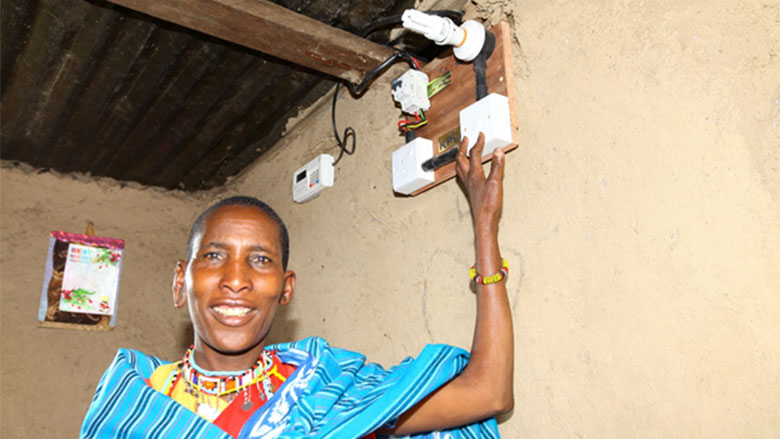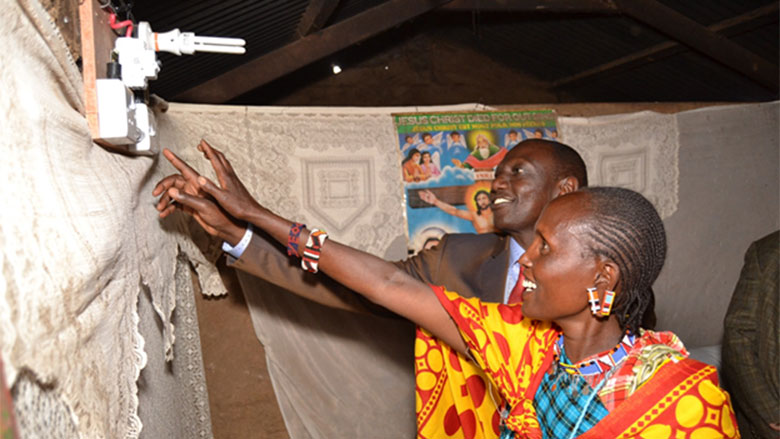Challenge
In the 90s, acute power generation capacity shortfall, low electricity tariffs making the sector dependent on government funding for investments needs, and heavy government involvement in all aspects of energy sector operations were obstacles towards a cost-competitive and viable energy sector. Heavy dependence on hydropower generation made the power sector vulnerable to droughts, creating recurrent load shedding, and forced the country to rely on expensive rental generation that affected the financial sustainability of the sector. The limited coverage and capacity of the transmission and distribution grid affected the quality of service provision, led to unnecessarily high electricity losses, and prevented the country from extending electricity service. In 1996, generation stood at 776 Mega-Watt (MW) while electricity access reached only about 8% of the population.
Approach
Realizing huge investment needs in the sector and inability to meet all the financing needs through public sector funding, the World Bank supported the Government of Kenya to pioneer the use of commercial financing to meet its energy infrastructure needs, which is today referred to as Maximize Finance For Development (MFD).
The approach supported major reforms to strengthen sector policies, laws, regulation and institutions to create enabling conditions for private sector investment, particularly in power generation. This was implemented through Bank financing for technical assistance for the sector restructuring and reform agenda, investment projects in renewable energy, transmission and distribution, and electricity access. Guarantee instruments from the International Development Association (IDA), the concessionary arm of the World Bank Group, promoted private sector participation in the generation sector. These were further complemented by risk mitigation instruments from the Multilateral Investment Guarantee Agency (part of the World Bank Group) and equity and debt support from International Finance Corporation (private sector arm of the World Bank Group). Continuous sector dialogue, supported by IDA and by World Bank-managed trust funds, contributed to building capacity and improving the operational efficiency of key parastatals, implementing regulatory reforms and building sector consensus on key areas, such as electricity access.
Reforms supported by the MFD approach:
- The first phase of reforms separated policy and regulatory functions from commercial activities, unbundled generation from transmission and distribution activities, created the sector regulator, introduced cost-reflective tariffs, and attracted private capital through the liberalization of generation activities.
- The second phase of reforms involved improving the operational and financial performance of the sector utilities, establishing arms’ length relationship between generation and distribution utilities through market-oriented power purchase agreements, and establishing new entities with specific mandates for developing transmission, geothermal resources, and rural electrification.
Results
Key results of the World Bank support for MFD approach in Kenya include:
- WBG support (through either IDA lending and guarantees and IFC investment) contributed to development of 558 MW geothermal capacity between 2003 and 2015, and 324 MW of thermal capacity between 2001 and 2016.
- As of June 2018, generation capacity stands at 2,670 megawatts (MW), with peak demand of 1,841 MW, up from a capacity of 776MW and a peak demand of 648 MW in the year 1996.
- Kenya has achieved remarkable success in expanding generation capacity of a well-diversified mix with close to 85 per cent of energy being generated from clean sources (mainly geothermal, hydro and wind). Today, geothermal capacity contributes to almost half of energy generated, thus ensuring security of energy supply even in periods of drought. Hydropower constitutes about a third of energy generated today. In 1996, hydropower constituted almost two-third of energy generated, which exposed the country to severe load shedding during drought years.
- 37% of the installed generation capacity (~1,009MW) today has been developed through Independent Power Producers (IPPs) representing 53% of the incremental generation capacity since 1990.
- At least US$3 billion in private capital mobilized in the power sector between 1997 and 2018.
- Two major utilities (Kenya Power and Lighting Company - KPLC and Kenya Electricity Generating Company - KenGen) are publicly listed companies, operating on commercial principles and are able to tap into capital markets for financing needs.
- Kenya is driving one of the most successful electrification programs in sub-Saharan Africa (SSA), encompassing both grid and off-grid solutions. Total access to electricity in Kenya stands at 75% from both grid and off-grid options.
- Kenya’s key sector indicators, such as system (technical and commercial) losses (~21%) and collection rate (~99%) are much better than many of the countries in Sub-Saharan Africa.
Bank Group Contribution
- Energy Sector Reform and Power Development Project [IDA credit US$125 million] (1997): The project leveraged US$262.5 million from private capital in three power generation projects.
- Kenya Private Sector Power Generation Support Project [IDA guarantee US$135 million] (2012): IDA guarantees leveraged US$431 million from private capital for the development of 250MW of thermal capacity.
- KPLC Guarantee Program (under Kenya Electricity Modernization Project - KEMP) [ IDA US$200 million) (2015): IDA guarantee leveraged US$500 million long-term commercial loan for KPLC.
- Kenya Electricity Modernization Project – KEMP [IDA US$250 million] (2015): IDA financing used to support an increase in electricity access (through Last Mile Connectivity Program) and improvement in the reliability of service. The Last Mile has since mobilized US$770 million in donor financing.
- Kenya Off-Grid Solar Access Project (KOSAP) [IDA credit US$150 million] (2017): US$150 million of IDA financing is supporting the provision of off-grid electricity services to remote, low density, and traditionally underserved areas of the country through a private sector-led, market-based approach.
- KenGen Guarantee Project [P162422 –IDA guarantee US$180 million] (2018): IDA guarantee to leverage up to US$300 million in long-term commercial financing.
- Financial Advisory Services for Kenya Energy Utilities (2018): Funded by Public Private Infrastructure Advisory Facility (PPIAF), the activity provides technical and capacity building support to KPLC, KenGen and KETRACO in the preparation of detailed investment and financial strategies, which are key to the financial sustainability of these utilities.
Partners
Kenya has a vibrant donor community with multilateral and bilateral financiers who have contributed consistently to the evolving thinking across the sector value chain: on generation, transmission, distribution and electrification. Donor meetings take place almost monthly to coordinate investments and analytical work, with joint presentations to the Ministry of Energy occurring quarterly. Donors have contributed to more than US$3 billion in grants and loans to support the development of new generation capacity, and Government of Kenya’s flagship last mile electrification program has attracted US$770 million from the donor community, including World Bank support for the Kenya Electricity Modernization Project.
Kenya Electricity Sector Donors | |||
Agence Française de Développement (AFD) | German KfW | Japan International Cooperation Agency (JICA) | United Nations Environment Program (UNEP) |
Africa Development Bank (AfDB) | Department for International Development (DFID) | Netherlands | United Nations International Development Organization (UNIDO) |
Australia | European Investment Bank (EIB) | Norway | United States Agency for International Development (USAID) |
Belgium | European Union | Spain | The World Bank |
China | German GIZ | United Nations Development Program (UNDP) |
|
Moving Forward
- Realizing huge investment needs in the sector and inability to meet the financing needs through public sector funding, Government of Kenya with the support of the World Bank, has been pioneering the use of commercial financing across the power sector value chain.
- The country is driving one of the most successful electrification programs in Africa, connecting more than 1.2 million customers per year on an average with a target to achieve universal access to electricity by 2022. The flagship Last Mile Connectivity Program is addressing the affordability barrier for connections in rural areas.
- Large investments are required in high-voltage transmission and medium-voltage distribution network to ensure energy supply to the last mile consumers. Therefore, additional support for grid strengthening and expansion in the order of US$370 million is under preparation by the Wrold Bank through the proposed Kenya Electricity System Improvement Project.
- Kenya is set to embark on a third generation of reforms through the new Energy Policy and Energy Act 2019 (recently approved) to align the policy and regulatory framework of the sector with the 2010 Constitution and its devolution framework.
Beneficiaries
A woman like Benta Anyango in the Mathare (informal) Settlement, can now depend on affordable, and reliable power to light her home, and keep her businesses open after dark, and can walk in her neighborhood safely in the night. “Compared to the illegal power, it has better and brighter light.”

